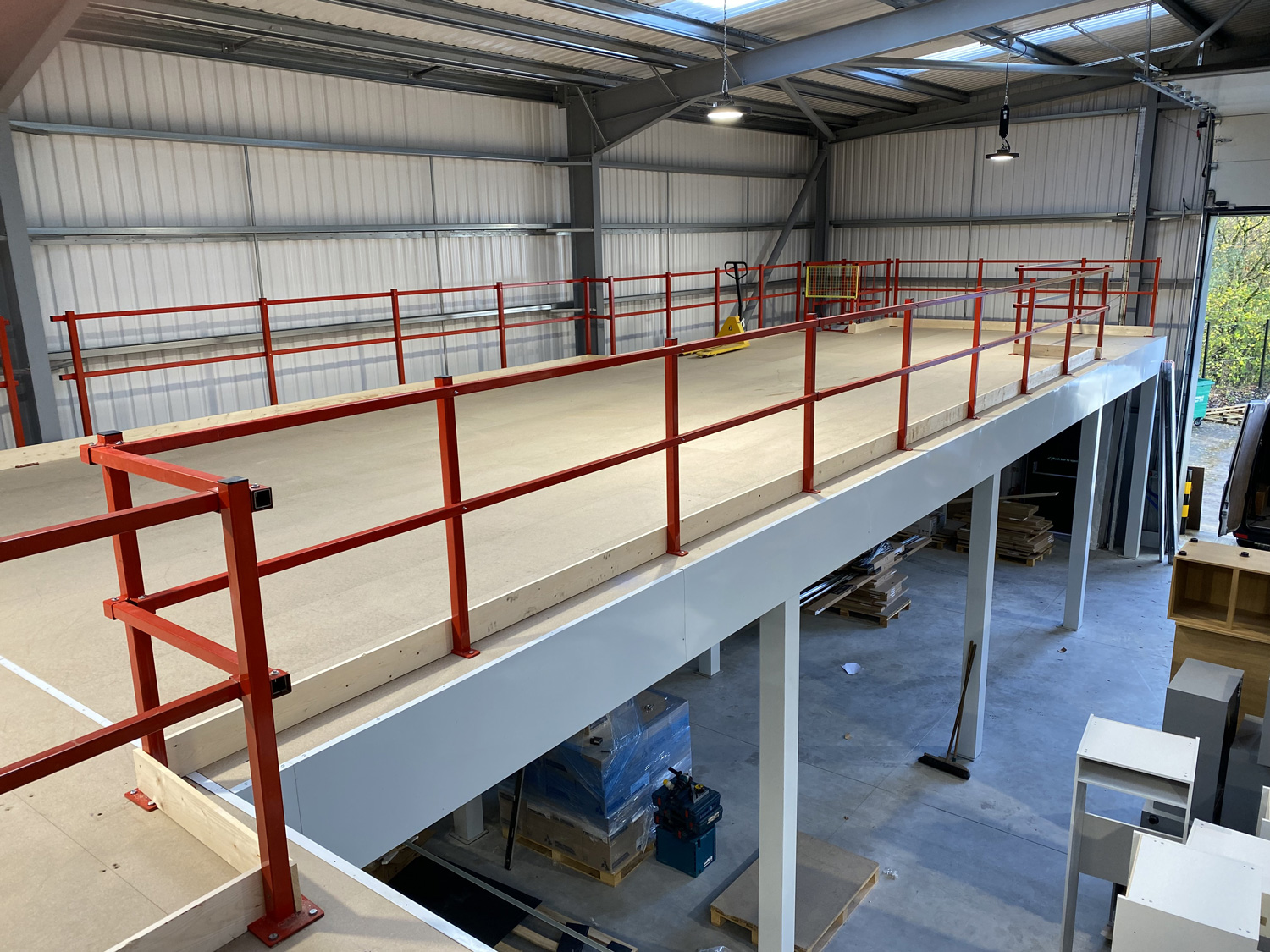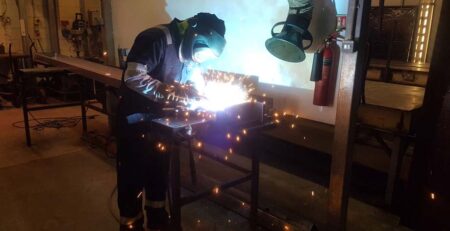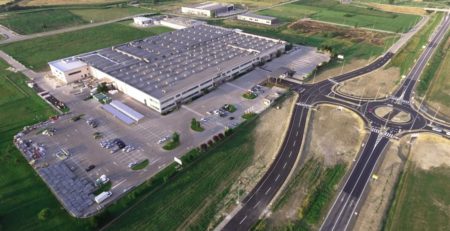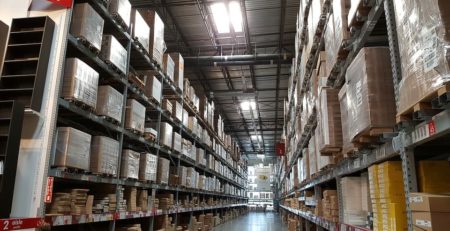Design and installation tips for industrial mezzanine floors
The beauty of a mezzanine floor is that it is a completely versatile space. That means that it can be designed with a purpose in mind and tailored to suit the needs of the warehouse where it will be installed. Typically, there are three key decisions to make when designing and installing a mezzanine. These are:
- What to use the mezzanine for
- What flooring to install on your mezzanine
- What access to install on your mezzanine
The different uses of an industrial mezzanine floor
An industrial mezzanine floor is a raised platform that is installed within an existing warehouse or office building to create additional usable space. They are popular with businesses in the UK where floor space comes at a premium and are commonly used for:
- Storage | Mezzanine floors can be used to create additional storage space in a warehouse or distribution center. This is particularly useful for businesses that need to store large or heavy items, such as pallets or machinery.
- Office space | Mezzanine floors can create additional office space within a factory or warehouse. This is useful for businesses that need to have a presence on the factory floor but also require a separate area for administrative work.
- Manufacturing | Mezzanine floors can increase manufacturing space within a factory. This helps businesses to expand their production capacity without moving to a new facility.
- Showroom | Mezzanine floors make for excellent showroom spaces. This is useful for businesses that need to display their products but are limited by the size of their current building, such as window and door manufacturers.
What are the different types of mezzanine flooring?
Particle board, steel plates and open steel are three common materials used for industrial mezzanine flooring. Each has its own advantages and disadvantages. Here are the key differences and benefits of each type:
- Particle board | Particle board is a type of engineered wood that is made from wood particles and adhesives. It is a cost-effective option for mezzanine flooring and is often used in commercial and light industrial applications. The advantages of particle board are its affordability, ease of installation and low weight. The disadvantages are that it isn’t as durable as other options and is more combustible in the event of a fire.
- Steel plates | Steel plates are solid steel sheets that are welded together to create a mezzanine floor. This type of mezzanine flooring is a durable and strong option that can support heavy loads. However, steel plates are more expensive than other materials such as particle board or open steel.
- Open steel | Open steel consists of interlocking steel bars that create a grid pattern. It’s a cost-effective option that is often used in industrial and commercial mezzanine floors. Advantages include ventilation and airflow, which can be an advantage in some applications, and low weight. However, open steel also has some downsides, such as reduced durability compared to solid steel plates and the fact that it can be slippery when wet, which can be a safety hazard.
Overall, the choice of mezzanine flooring material will depend on a range of factors, including the intended use of the mezzanine, the required load capacity, and the budget for the project. A specialist designer and installer like Doity will help you match the right flooring for your budget and intended use.
What are the different types of mezzanine access?
There are several different types of mezzanine access options that can be used to connect the mezzanine floor with the ground level or other levels in a building. Here are some of the most common types:
- Stairs | Stairs are a reliable and efficient means of mezzanine access in a warehouse. They provide a safe, accessible, and cost-effective solution that can be customised to suit the shape and layout of your unit.
- Ladders | Ladders are a simple and economical option for mezzanine access. They are often used in smaller spaces or where frequent access is not required. Ladders can be fixed or foldable and are available in different materials such as aluminum or steel.
- Vertical lifts | Vertical lifts are a type of mechanical lift that can be used to move goods or people between different levels in a building. They can be customised to suit specific applications, including heavy-duty loads, multi-level access, and high-speed operations.
- Pallet Gates | A pallet gate is a safety device that is designed to prevent falls from elevated mezzanine floors when loading and unloading goods using pallet jacks or forklifts. Pallet gates can be installed on different types of mezzanine floors, including steel plates, open steel, and particle board. They are often required by building codes and regulations to ensure the safety of workers and prevent falls from elevated levels.
The choice of mezzanine access will depend on a range of factors, including the intended use of the mezzanine, the required load capacity, and the available space in the building. Doity’s specialist design team will help you choose the appropriate access for your mezzanine based on its end use.
Are you a UK business looking to install an industrial mezzanine?
Here at Doity, we have a wealth of experience in designing and installing mezzanine floors for a variety of industrial and commercial applications. Our unique Revlok design incorporates a patented locking system that significantly reduces installation time by up to 50%. This not only saves time, but also reduces labor costs and minimizes disruption to your business operations. We provide a comprehensive service from design and installation to project management and ongoing maintenance, ensuring that you receive a high-quality mezzanine floor that meets your business’s needs.
Get in touch today to discuss a mezzanine floor with our team of experts.












